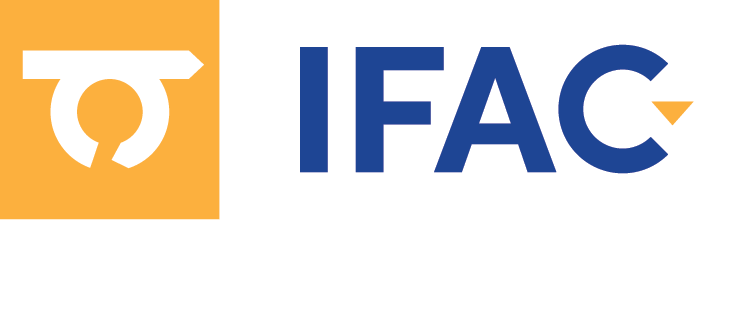

 July 14-17, 2024
July 14-17, 2024Toronto, Ontario, Canada 12th IFAC International Symposium on
Advanced Control of Chemical Processes


 July 14-17, 2024
July 14-17, 2024Toronto, Ontario, Canada 12th IFAC International Symposium on Advanced Control of Chemical Processes |
Keynote Talks |
|
1. Sensitivity-Based Adaptive Sampling for Physics-Informed Neural Networks |
|
Shuji Chang, University of Waterloo Abstract: For training the Physics-Informed Neural Networks (PINNs), the allocation of collocation points in the geometric domain plays a pivotal role in determining the model’s performance. We present a novel sampling method tailored for optimal point allocation in PINNs. The method involves an initial meshing of the domain, followed by a calculation of the sensitivity matrix relating the losses for each mesh element to local changes in the locations of the training points. Subsequently, based on the principles of A-optimal experimental design, the sampling probability is dynamically redistributed over the domain. In this way, areas of high sensitivity and corresponding physical significance receive further representation in the training data. Preliminary results illustrate the effectiveness of the proposed method when applied to the problem of developing flow between two parallel plates. This sensitivity-based sampling (SBS) is shown to increase the overall precision of PINNs since it can specifically capture sharp gradients in critical points within the geometric domain. |
|
|
|
2. Fast Quantum Gate Control with Trajectory Optimization |
|
Shouliang Hu, Australian National University Abstract: Fast quantum control helps reduce the influence of unavoided disturbances and hence plays a vital role in practical quantum technology and chemical reactions. Instead of optimizing the terminal cost like standard optimal quantum control methods, this paper formulates the problem as a trajectory optimization problem, and implements the sequential quadratic programming algorithm to search for short control fields. The core idea is to minimize the cumulative intermediate error to incentivize early achievement of the designed gate. The numerical result on the Toffoli gate demonstrates the effectiveness of the proposed method. |
|
|
|
3. Solving for Exact Designs in Optimal Experiment Campaigns under Uncertainty |
|
Marco Sandrin, Siemens, Imperial College London Abstract: Applying model-based design of experiments to compute maximally-informative campaigns with multiple parallel runs is challenging. Effort-based methods can overcome some of these challenges through discretizing the experimental space into a finite set of candidate experiments, then applying convex optimization techniques to determine the optimal efforts for each candidate, and finally rounding the efforts to integer numbers of runs for a target experimental campaign size. For small experiment campaigns in particular, the final rounding can result in large suboptimality. This paper presents an approach to solving the exact design problem, where the effort variables being optimized are constrained to taking integer values. We consider model parametric uncertainty and formulate risk-inclined, risk-neutral and risk-averse exact design problems as mixed-integer nonlinear programs (MINLPs) with convex participating functions. We demonstrate the tractability of an outer-approximation algorithm to solve such MINLPs to global optimality on a case study involving the exothermic esterification of propionic anhydride with over 1000 experiment candidates and 100 uncertainty scenarios.
|
|
|
|
4. Safety with Non-Deterministic Control Action Selection Using Quantum Devices |
|
Kip Nieman, Wayne State University Abstract: Recent increasing interest in quantum computers has spurred research into practical engineering applications for quantum algorithms. One potential application is process control. The unique quantum phenomena involved with quantum computing brings up interesting considerations for control. This work focuses on non-determinism, first through a motivating simulation utilizing a continuous stirred-tank reactor. Following this, two methods of potentially ensuring system stability in the presence of non-determinism are discussed. The first involves including an additional gate to the modified Grover’s algorithm presented in our previous work, which is designed to prevent a qubit state corresponding to an undesired control input from being measured. The second method involves defining an inner region where, if the state leaves the region, a classical stabilizing controller is activated to drive the state back inside the region. |
|
|
|
5. ECCBO: An Inherently Safe Bayesian Optimization with Embedded Constraint Control for Real-Time Optimization |
|
Dinesh Krishnamoorthy, Eindhoven University of Technology Abstract: This paper introduces a model-free real-time optimization (RTO) framework based on unconstrained Bayesian optimization with embedded constraint control. The main contribution lies in demonstrating how this approach simplifies the black-box optimization problem while ensuring "always-feasible" setpoints, addressing a critical challenge in real-time optimization with unknown cost and constraints. Noting that controlling the constraint does not require detailed process models, the key idea of this paper is to control the constraints to "some" setpoint using simple feedback controllers. Bayesian optimization then computes the optimum setpoint for the constraint controllers. By searching over the setpoints for the constraint controllers, as opposed to searching directly over the RTO degrees of freedom, this paper achieves an inherently safe and practical model-free steady-state RTO scheme. In particular, this paper shows that the proposed approach can achieve zero cumulative constraint violation without relying on assumptions about the Gaussian process model used in Bayesian optimization. The effectiveness of the proposed approach is demonstrated on a benchmark Williams-Otto reactor example. |
|
|
|
6. A New Modeling Framework for Real-Time Extreme Electricity Price Forecasting |
|
You Peng, Dow Abstract: In recent years, extreme electricity prices have occurred with greater frequency and magnitude. Accurately predicting extreme electricity prices is of great interests to market participants. This paper aims to forecast real-time electricity prices for the next 24 hours for the Houston load zone in Electric Reliability Council of Texas (ERCOT), targeting at providing accurate prediction of potential extreme prices. Historical energy prices from ERCOT and weather data from the National Oceanic and Atmospheric Administration (NOAA) were used. A new modeling framework that takes forecasted upper bound of exogenous variables to predict both (1) real-time prices with uncertainty using a temporal fusion transformer (TFT) model as well as (2) likelihood of having extreme prices in the forecasting horizon is proposed. Additionally, a concatenated model fusion strategy is applied as an additional step to further increase the framework's capability of accurately forecasting extreme prices. Our proposed method showed better forecasting capability with a RMSE of 35 compared to other state of the art methods such as auto-encoder long short-term memory (AE-LSTM) and PatchTST (RMSE of 49 and 42 respectively) on the same testing period. In addition, we quantified the uncertainty of the predictions leveraging the quantile output from the TFT model and found that 97% of the time, the 98th quantile of the forecasting horizon contains the actual real time price. Our proposed framework provided an accurate and robust approach for forecasting normal and extreme electricity prices that could have significant economic benefits to electricity market participants
|